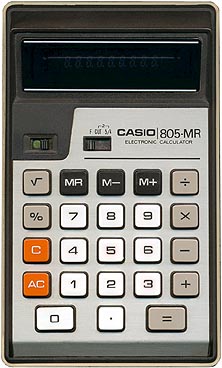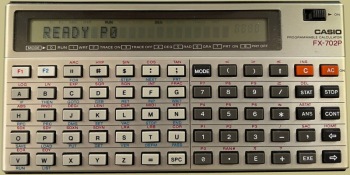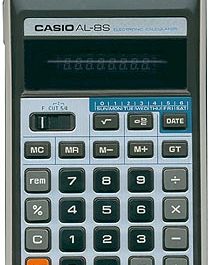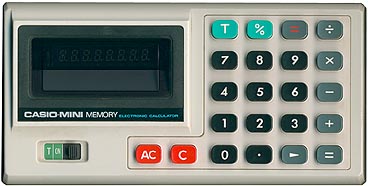
The Casio 805-MR is a desktop calculator from around 1976. It has a two-piece plastic case with a white top and black bottom. The brushed aluminum keyboard wraps around the bottom section. At 98mm x 160mm x 35mm and 222g without batteries, it is large enough to use on a desk but can still be held.
Power comes from 4 AA batteries or an optional AC adapter. The display is an 8-digit blue vacuum fluorescent tube, with a 9th digit that is not used. The large, squishy keys have a hollow sound when pressed.

Features are basic – just the four math functions plus square root, percentages, and a 3-register memory. An extra slide switch selects between floating point or fixed decimal with rounding.
Inside are simple 1970s era components – a NEC microprocessor, VFD tube display, transistors, diodes, capacitors and resistors. The keyboard connects to the main circuit board via a ribbon cable. Access just requires removing two screws.

Some notes on the logic:
- The C button clears number entry, AC clears everything
- 9 digit overflow is suppressed
- Divide by zero shows E and locks up
- Overflow shows E and locks up
- Constant on multiply/divide but not add/subtract
- Negative square roots allowed
- 7 digit negative number limit
- No memory store indication
- Negative number indicated by minus sign
- Has negative zero bug

Overall, the Casio 805-MR is a solid, well-built basic calculator typical of mid-1970s consumer electronics. The “cycling number” display provides some flair, though the logic has limitations like the 7-digit negative number handling. For basic office or school math it would have been a handy tool in its day.


